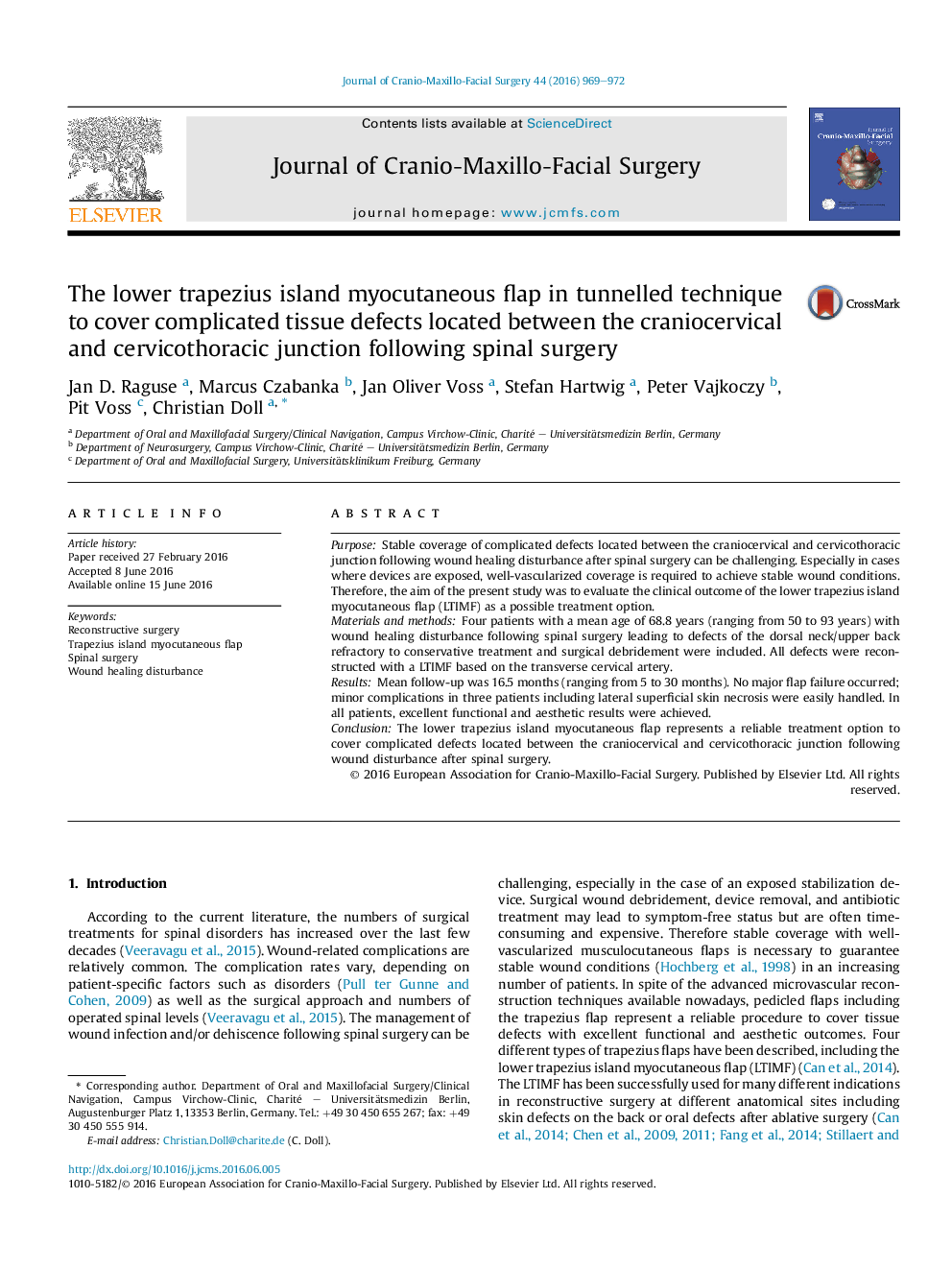| Article ID | Journal | Published Year | Pages | File Type |
|---|---|---|---|---|
| 3142809 | Journal of Cranio-Maxillofacial Surgery | 2016 | 4 Pages |
PurposeStable coverage of complicated defects located between the craniocervical and cervicothoracic junction following wound healing disturbance after spinal surgery can be challenging. Especially in cases where devices are exposed, well-vascularized coverage is required to achieve stable wound conditions. Therefore, the aim of the present study was to evaluate the clinical outcome of the lower trapezius island myocutaneous flap (LTIMF) as a possible treatment option.Materials and methodsFour patients with a mean age of 68.8 years (ranging from 50 to 93 years) with wound healing disturbance following spinal surgery leading to defects of the dorsal neck/upper back refractory to conservative treatment and surgical debridement were included. All defects were reconstructed with a LTIMF based on the transverse cervical artery.ResultsMean follow-up was 16.5 months (ranging from 5 to 30 months). No major flap failure occurred; minor complications in three patients including lateral superficial skin necrosis were easily handled. In all patients, excellent functional and aesthetic results were achieved.ConclusionThe lower trapezius island myocutaneous flap represents a reliable treatment option to cover complicated defects located between the craniocervical and cervicothoracic junction following wound disturbance after spinal surgery.
